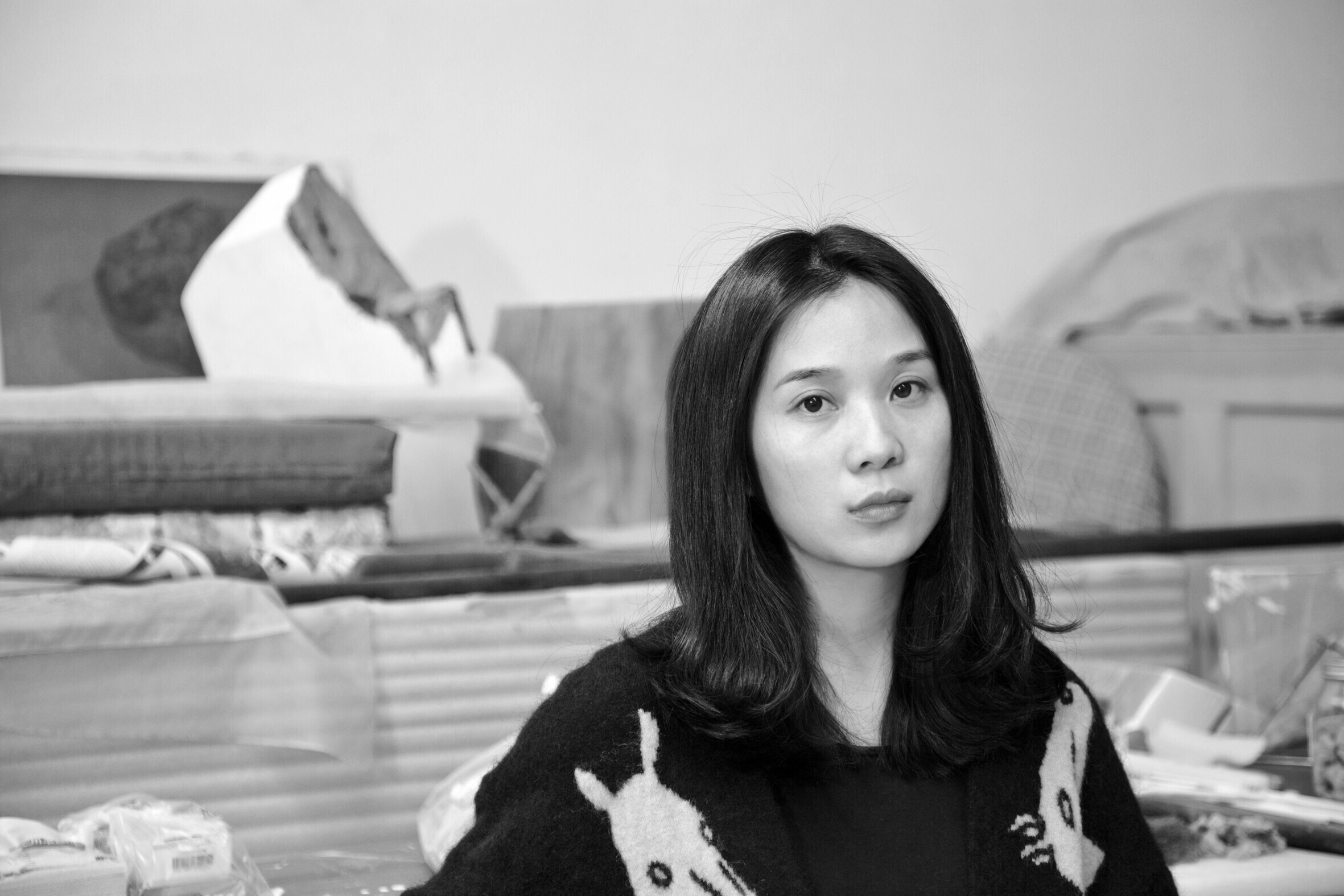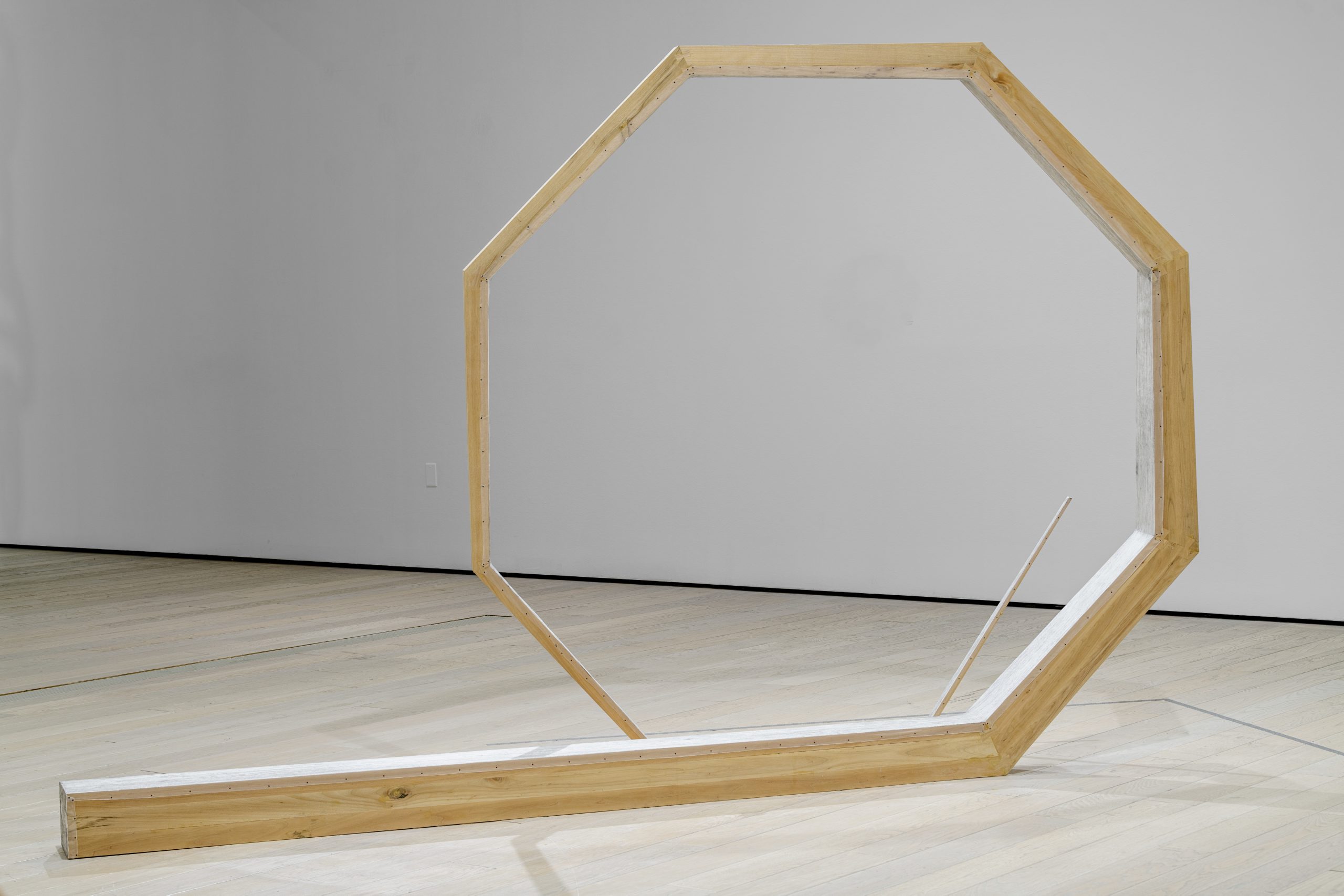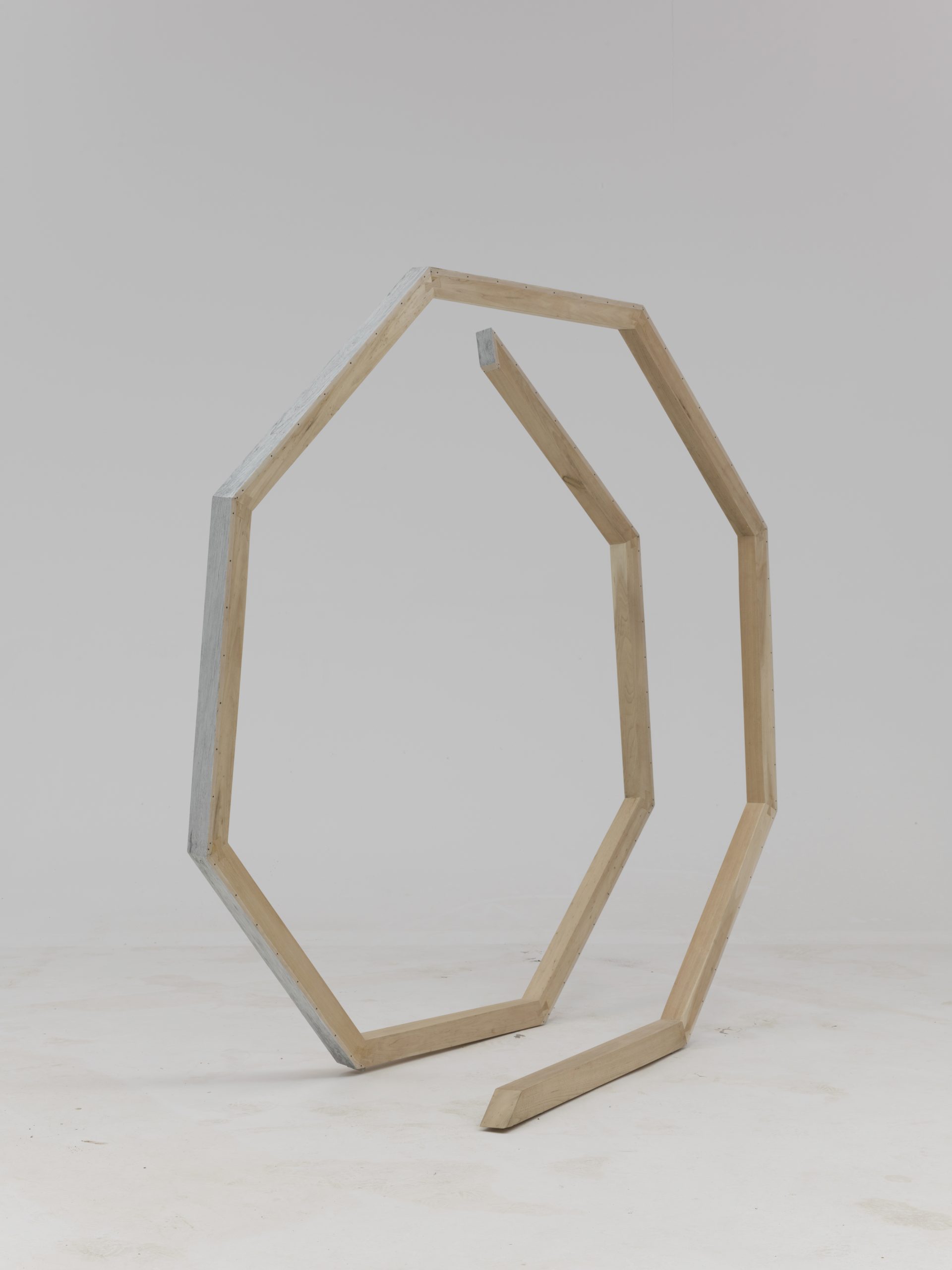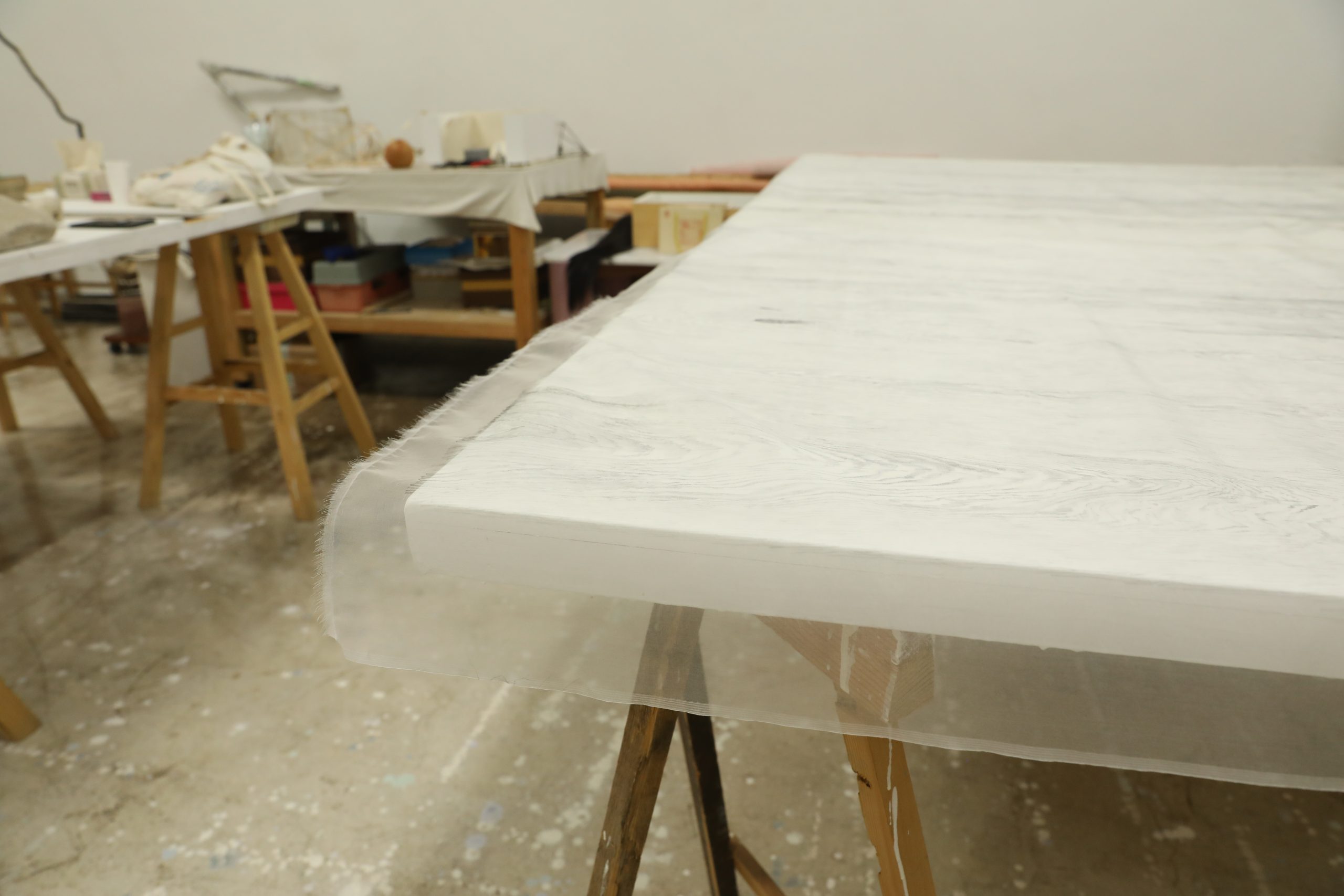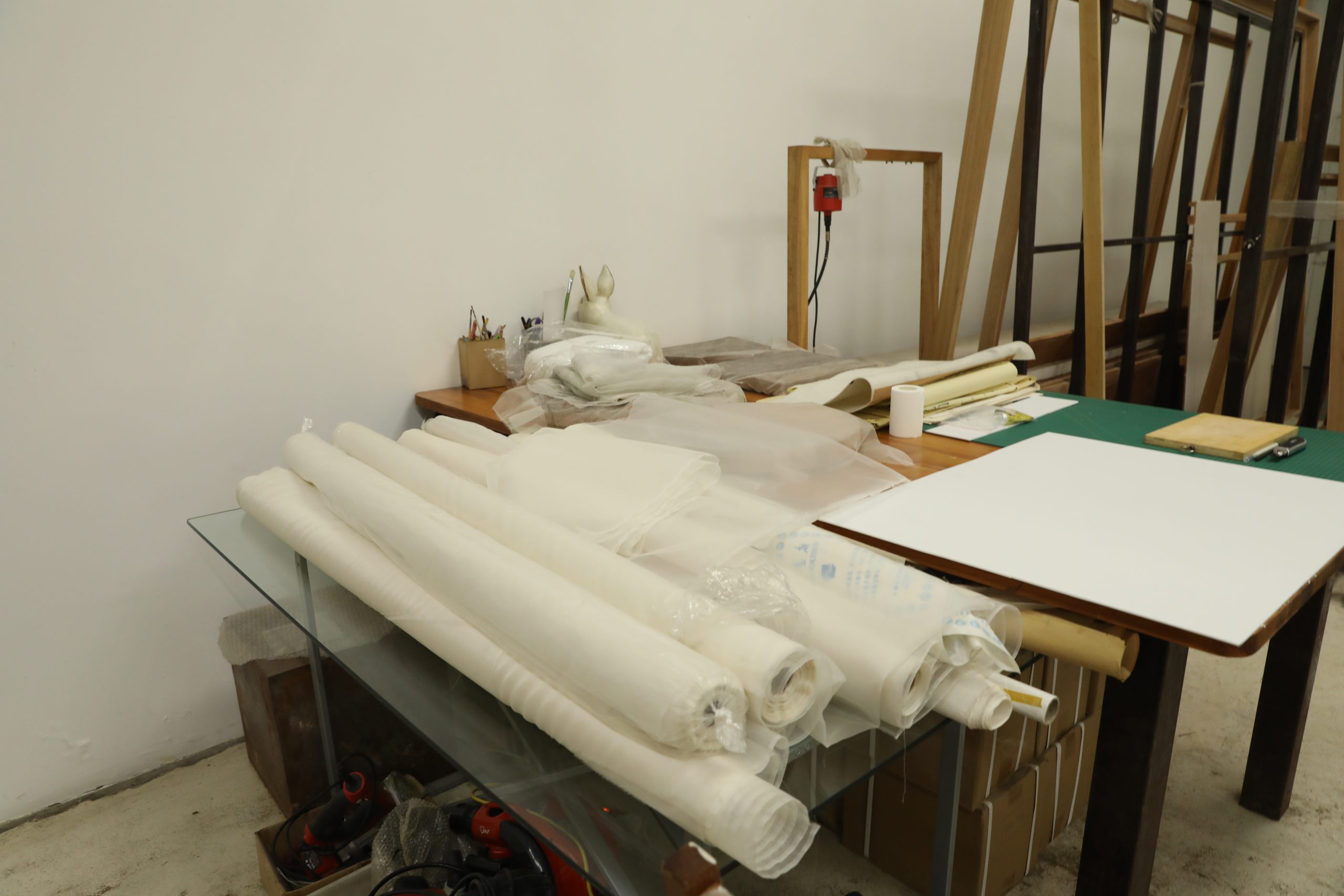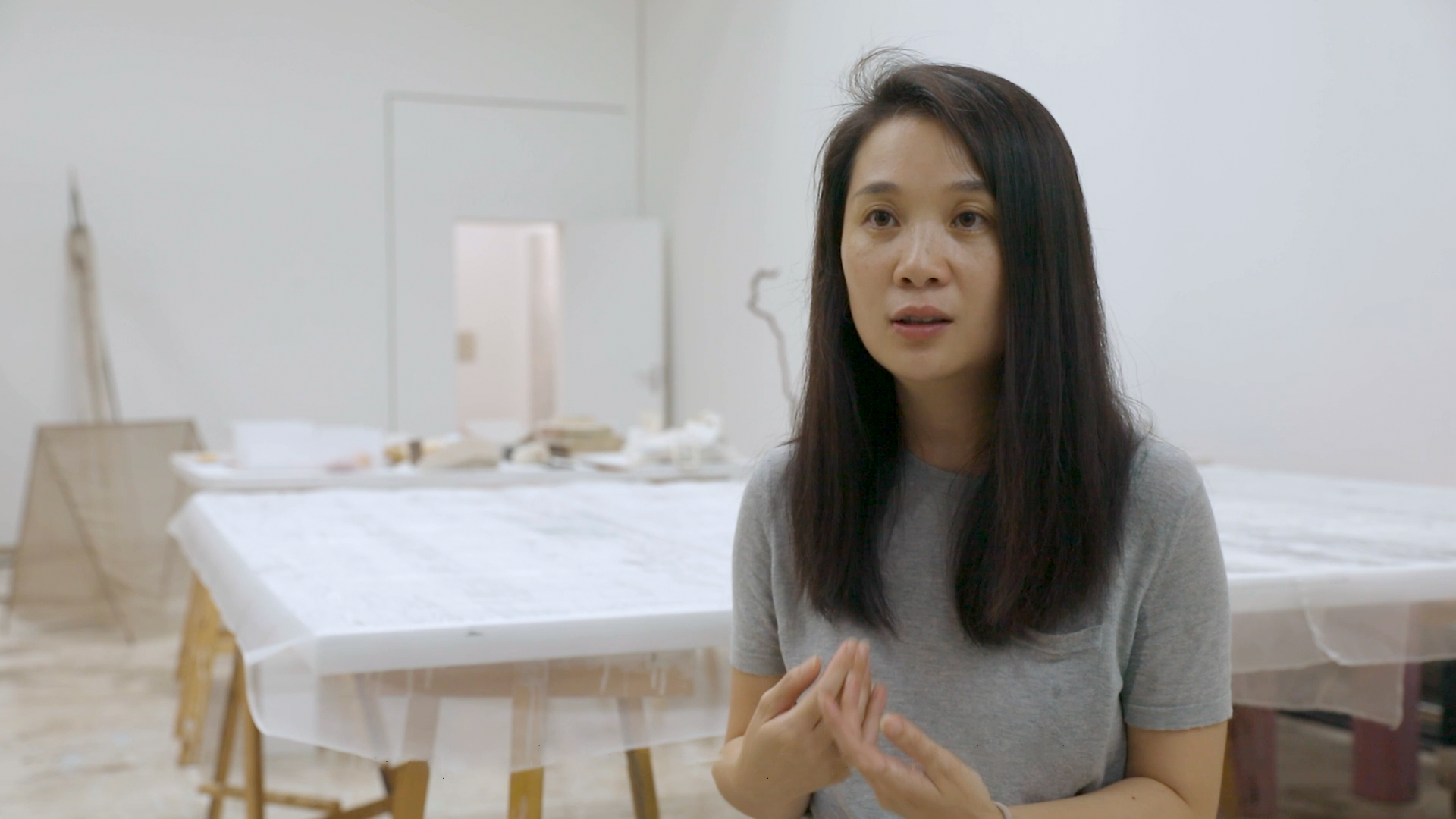In this series, I have been in the process of exploring myself, completing it little by little up to today. There are certain materials involved in it, like raw silk, which we call xiao. There’s wood, ink, and some tiny iron nails. There are actually contradictions within the materials themselves. For example, many people are curious because raw silk appears very thin and fragile, as if it couldn’t withstand much force. But when I use the iron nails to prick it, to tighten it, to stretch it flat, people might think this combination is very strange and wonder how I first thought of this contradiction of using a very sharp, very hard thing to prick this object that looks very thin and fragile. But in fact, it is from very primitive life, these touchpoints.
Silk is sturdy. In early times, rich people would use it to create luxurious garments with silk lining. That is to say, it can be semi-transparent with no color and at the same time create a sturdy effect. No matter how thin or soft the surface fabric is, silk could be used to create a sturdy effect. So since ancient times, silk has had a very specific set of material properties. Plus, I chose this material because it has a semi-transparent quality. This transparency is actually necessary for my process because I need to go through a thin layer of silk to paint all the lines that I can see on the wood. So this already meets my two requirements: it’s sturdy like paper and at the same time it’s very transparent, plus it has an animal quality, because silk is produced from silkworms.
There is much in this animal quality itself that is very moving, I think. We all know that spinning silk is the last stage of the silkworm’s life cycle; afterwards it dies. So the animal nature of silk also implies a feeling of life and death. So the animal nature also brings [something to] the material. Even though in the end it looks like just a piece of cloth, actually for me, in my personal psychology, I can feel that kind of weight. And it just so happens that this meaning and this feeling were also a very good fit with the conflicting emotional phase that I was in at that time.
Wood, everyone thinks, is warm, compared with steel, with a lot of materials. People often like to use wooden furniture in the home, like to buy something wooden and put in the home, because it gives one a sense of stability. For example, there are many statues and carvings [made] of wood. They think it looks warmer than a copper casting. But wood is very interesting; this thing that we like so much is actually a corpse—it’s the corpse of a tree! So it comes back to the same issue, which is that this thing that makes you feel warm is actually a result of death, and then these two things are really actually very contradictory: your warmth comes from this other thing that’s been cut down and lost. Because I’ve always been obsessed with this feeling, I rarely use a piece of wood to communicate an intuitive feeling of comfort. Instead, I’m interested in the properties of wood that may make people feel not so comfortable.
Then, when I chose this wood, first of all, compared with this metal, compared with this iron nail, it is actually soft. It is not so hard, but in fact, compared with silk, it is very heavy—because many of my works are larger. For example, some works like the Wood, The Vortex beneath the Vortex (Xuan di zhi xuan) series may be nearly four meters high. And then a very thick piece of this, which is a board cut out of wood about four centimeters thick, it’s hard for two people to carry. What looks comfortable to you is actually very uncomfortable in weight. So when a heavy thing is paired with something very thin, when something very soft is paired with something very sharp but very small, and when this half-transparent and fragile-looking thing and this very delicate way of tracing are all combined together, this twisting together, strong twisting, can feel stable, and even presents a sense of visual calm. I think this is also contradictory.
